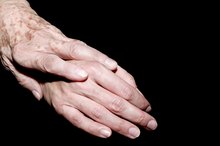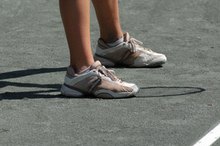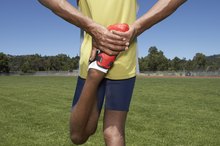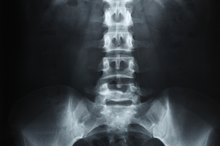The Reasons Why the Strength in One's Legs Weakens as You Age
You know it's bad to sit too much. However, you don't think you have a problem until you need your hands to get out of a chair. Physiological changes in the muscles make loss of leg strength a common problem as people age, and insufficient activity, diabetes and other health problems can make matters worse.
Normal Changes
Some loss of muscle mass, called atrophy, is normal with aging, and the amount may be determined partly by genetics. The working fibers of the muscles shrink, and fat and fibrous tissue replace some of former muscle volume. This atrophy may begin in males in their 20s and in women in their 40s. Changes in nerve function also reduce the amount of muscle contraction and tone, causing muscles to lose strength.
Lack of Exercise
Importance of Muscular Strength
Learn More
Too much chair time may make age-related weakness in your legs worse. If you have outsourced the cleaning and gardening, you probably aren't as active as you used to be. Even 90-year-olds can improve muscle strength through strength training, notes Roy J. Shephard of the University of Toronto Faculty of Medicine. Some helpful methods include bodyweight exercises, such as squats, free weights and weight machines. Ask your physician what leg exercises are best for you.
Endocrine Problems
Endocrine disorders can cause leg weakness. For example, diabetes often causes nerve damage in the legs and feet, called diabetic neuropathy. The result is pain or numbness and weakness in the legs. Overweight diabetics and those with poor blood sugar control are more likely to have these problems. People with insufficient thyroid hormones also sometimes experience weak muscles in the legs and elsewhere.
Spine and Back Problems
4 Symptoms of Leg Weakness You Should Learn to Recognize
Learn More
Various problems with the spine and back can cause weakness in one or both legs. In sciatica, for example, a spinal disk or a muscle in the buttock causes pressure on the nerves, resulting in pain and weakness in one or both legs. Spinal stenosis, a narrowing of the channel in the spinal chord, also can cause pressure on the spinal chord and weakness in the legs.
Other Conditions
Leg weakness in older people can have a myriad of other causes. For example, some housebound elderly develop muscle weakness due to extreme vitamin D deficiency. Multiple sclerosis also causes weakness in the legs, and the Multiple Sclerosis Society explains that vitamin D deficiency may be a contributing factor. Other possible causes of weakness include amyotrophic lateral sclerosis, or Lou Gehrig's disease, alcoholism, medications, strokes, rheumatoid arthritis or injuries.
Related Articles
References
- MedlinePlus: Aging Changes in the Bones - Muscles - Joints
- Encyclopedia of Sports Medicine and Science: Aging and Exercise
- MayoClinic.com: Strength Training - Get Stronger, Leaner, Healthier
- University of Maryland Medical Center: Muscle Atrophy -- Overview
- National Diabetes Information Clearinghouse: Diabetic Neuropathies - The Nerve Damage of Diabetes
- EndocrineWeb: Hypothyroidism - Too Little Thyroid Hormone
- MedlinePlus: Sciatica
- British Medical Journal: Leg Weakness in a Patient with Lumbar Stenosis and Adrenal Insufficiency
- British Medical Journal: Recent Development in VItamin D Deficiency and Muscle Weakness Among Elderly People
- National Multiple Sclerosis Society: Who Gets MS?
Resources









